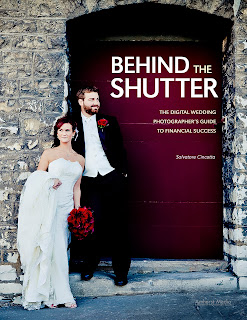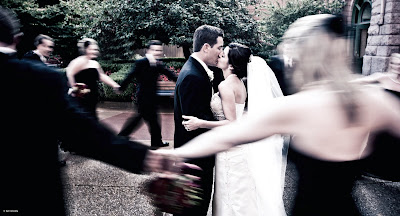When planning an engagement session, you will have many stylistic options available to you. Those will be explored further in the next chapter. No matter what style you choose, however, you will have two main avenues for executing it: a formal approach or an informal approach. Although the formal session is usually shot in a more traditional studio setting, I suggest that you try to think more broadly of “formal” as your approach to dealing with the customers. The same goes for the “informal” approach.
FORMAL
The classic, traditional engagement photo is a formal portrait. In the 1800s, portraits were necessarily serious and formal due to the extremely long exposure times that were required by the photographic technologies of the day. As higher film speeds became available, portraits took on a somewhat happier vibe; the subjects were smiling and more comfortable, but still formal and looking directly into the camera. Since the digital revolution, photojournalism has deeply impacted the style of portraits clients desire, but there is still a large market for a more formal approach to an engagement portrait.
If your clients are interested in a more formal approach, or if you are more comfortable shooting that way, you will need to decide if the session will be done in a studio setting with multiple backdrops or props, or if you will go on location. Formal shoots are typically created in a studio sitting, but if you do choose to go on location, think about more formal locations—like a church or museum, as opposed to a beach or heavily urban setting that will define your shoot before you even begin. The location you choose will directly impact the formal mood of your photos.
Choose your location wisely. Formal shoots often take place in a studio setting with lights and backdrops. Pose the couple carefully, and pay attention to every detail—from hand posing to hairstyling. You have total control in these situations, so take advantage of that. Photo by Nicole Knauber.
When posing your couple, make sure to look for every flattering nuance and try out several different poses. They should generally be looking into the camera and their body language should be less relaxed. Think of an upright posture, folded hands, turned-in bodies, and seated or standing shots. Their bodies and faces should be angled toward the camera, not straight-on like a mug shot.
Formal sessions are not limited to a studio setting. Creativity may lead you to an unusual location that suits the couple's personality. Scout out the location to make sure it will enhance the mood, not detract from it. Photo by Evan Laettner.
Even though you don’t need as many exposures for formal portraits as you would for a more candid session, you still have the opportunity to use the digital media to your advantage. Keep shooting. Feel free to experiment with as many different poses and combinations as you like. You can always choose only the best one or completely delete anything that didn’t work. Ultimately, you are ensuring that the couple will have more selection in the end. Clients looking for a formal sitting will be more detail-oriented and will be looking for perfection. You don’t have the same kind of creative liberty to make artistic “errors” as you do in photojournalistic portraits.
INFORMAL
An informally styled engagement session can either be posed in a relaxed manner or it could take place as a totally photojournalistic shoot. You can also develop a combination of the two if you are skilled at directing and interacting with your clients. If your studio’s shooting area is limited in size, these types of sessions may work better on location. Additionally, the more relaxed atmosphere of an outdoor setting alleviates the stiffness of a traditional studio setting, something that is integral to a more informal approach.
A session that is still traditionally posed but executed in a more relaxed, informal manner is the most widely accepted type of session today. In this type of session, the clients may still be rather traditionally posed, but you will develop the poses as you go. You should give the clients direction and talk them through each pose, but allow them to be comfortable and to be themselves. This contrasts with a purely photojournalistic type of session, in which you provide little or no posing direction but concentrate, instead, on capturing your clients as they really are.
During your initial meeting with the clients, educate them about informal and photojournalistic approaches. See which one they are truly looking for. They may be confused as to the difference.
Informally posed sessions are a popular choice. They allow you to modernize an old concept and flatter any couple or location. Photo by Evan Laettner.
Buy this book from Amazon.com.
Buy this book from Amazon.com.












